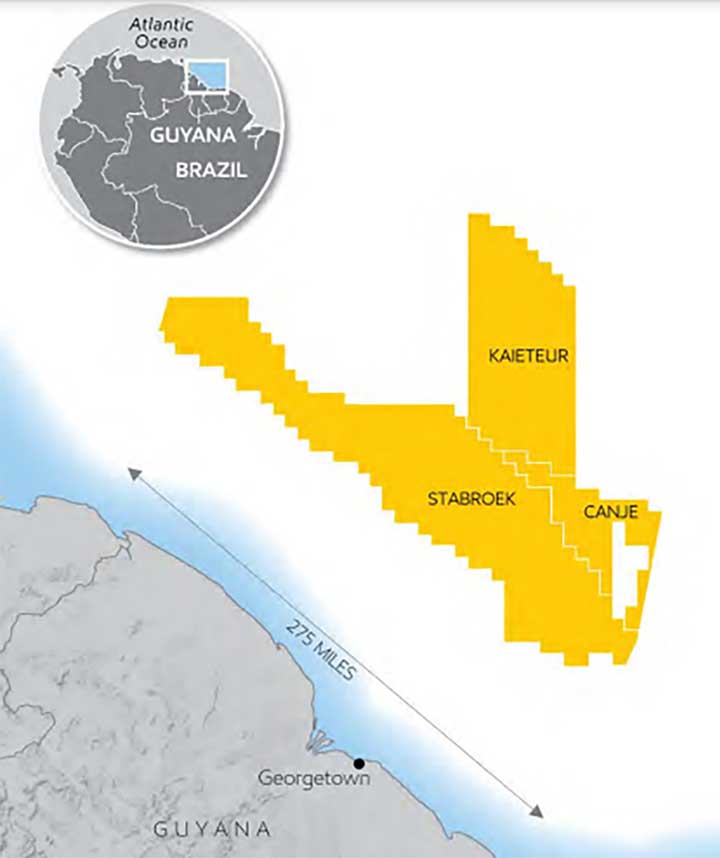ExxonMobil identifies over 50 more drillable wells
In a 2020 Investor Information presentation, ExxonMobil said it has identified considerable undrilled potential of more than 50 leads in the blocks it operates offshore Guyana.
The super major is looking to do more drilling in prospects targeted in the Kaieteur, Canje and Stabroek blocks. The blocks Exxon operates offshore Guyana now amount to more than 11 million acres. It is the operator of all three blocks, with various partners making up the three consortia, which own the licences.
It has made 18 discoveries in the Stabroek block since 2015, and encountered just two dry holes in the block. It said that it is testing the extent of the deeper cretaceous play across the Stabroek block. So far, the drilling done by the company in the behemoth Stabroek Block has only reached a very small portion of the block.
It is currently producing oil at the Liza Phase One project with maximum potential of 120,000 barrels per day. However, flaring of toxic gas has inhibited production. The company is also expected to start producing at Liza Phase Two and Payara in 2022 and 2024 respectively, at maximum capacity 220,000 barrels per day at each project.

Exxon also recently made a discovery in the Kaieteur block, while drilling its first well there and deepest by far offshore Guyana. This discovery at the Tanager-1 well appears key to the drilling activities of this super major, moving forward. The Tanager-1 well was anticipated to be the Kaieteur block prospect most likely to yield a commercial discovery, with an estimate of 256 million barrels. However, the results fell below expectations with heavier oil than what was found at the producing Liza field. The find was also small, at just 16 metres of net oil pay, not enough for a standalone reservoir. Westmount Energy, a firm with an indirect stake in the block, had said that the well is likely to be plugged up and abandoned.
Due to the nature of the find, Exxon and its partners are expected to further analyse the details of the Tanager-1 find to determine how it will impact prior analyses of the basin, and in so doing, drilling of other wells.
As for the Kaieteur block, the company’s seismic model had identified eight additional prospects with varying likelihoods of success. The block is likely to hold 2.1 billion barrels, according to a Competent Persons Report (CPR).
ExxonMobil intends to start drilling soon in the third block it operates, the Canje block. Its first well, Bulletwood-1 is anticipated to hold about 500 million barrels. The prospect is being termed a ‘Liza look-alike.’
“The second well on the Canje block will target either Sapote-1 in the east of the block or Jabillo-1 in the northwest of the block, which is reported as a billion-barrel class basin floor turbidite fan.”
In 2019, ExxonMobil relinquished a portion of the block to the government as per the terms of the exploration licence, reducing the size of the contract area from 6,100 sq. km to 4,800 sq. km. Yet, the Canje block may be more valuable even than the Stabroek block. It is anticipated that just over a dozen initial prospects identified in the block will yield 10 billion barrels of oil.






















